#the matrix quadrilogy
Text
people who think the first Matrix film is the only one in the quadrilogy worth watching but don't pay attention to what the film actually says, writing CinemaSins style thinkpieces 🤝 people who claim they're big SA2 fans but only played SA2B once when they were ten and can't recall basic plot details accurately
9 notes
·
View notes
Note
1 and 8?
1. Meaning behind your URL
Long story short I thought it was funny.
Long story long, I was hyperfixating hard on the Matrix quadrilogy, and I was craving fan content from people my age that wasn't “red pilled alpha male” type stuff. I wanted something kinda silly and dumb. I was joking to my friend about this and I was saying I wanted a matrix fandom like how the magnus archives fandom was (the only fandom I ever really participated in at the time) like how there were catboy elias memes I wanted catboy neo memes. The joke probably wouldn't have stuck if my friend didn't write a shitty joke fanfic about it.
8. Favorite movie
You might be able to tell, but I like The Matrix. The first one's the best of the franchise (even though I sometimes skip the first 30 minutes because I like the parts set in the real world best), but I also like the second one cause it has some of the best fight scenes in the quadrilogy. My other favorite movies include Scott Pilgrim, Howl's Moving Castle, and Treasure Planet.
2 notes
·
View notes
Text
I finally saw The Matrix Resurrections, and I have some questions about the world of the franchise.
There's a war: humans versus sentient machines. The machines are solar-powered, so humans do something that blocks out the sun. Deprived of their main source of power, the machines decide to start growing humans as batteries. To keep their brains active, the machines keep the humans they grow hooked up to a simulation of the real world. This is the quadrilogy's backstory.
Morpheus explains that the matrix is a "computer-generated dreamworld built to turn a human being into this." Then he holds up a battery. Now, batteries already exist. There's no reason to turn people into them. Humans produce a small amount of heat and electrical energy, but batteries are better at providing power to electrical devices. Why didn't the machines just build batteries? They had the energy and resources to build huge human farms, but why do that? It's scary, of course. That's the real reason.
In the fourth movie, it's been 60 years since Neo saved the machines from the rogue Smith program. A machine civil war has happened, and some machines are working with humans now. How are they powered? Certainly, the humans aren't operating their own human farms. And why, in 60 years, haven't the machines come up with a more efficient power source than human batteries? The matrix program is an unnecessary risk.
Here's something else. In the 3rd film, Neo and Trinity fly through the clouds and see the sun. This means there's an area above the obscuring clouds in which the solar-powered machines could build. The sun isn't hopelessly blotted out. The machines don't need to starve for power. Why don't they build above the cloud layer? Or, hey, why not move to Mars? Why do the machines want to stay on Earth? They should go build a Dyson sphere. Why get involved in a war with humans at all?
I'm sure there are good explanations out there.
13 notes
·
View notes
Text
10 Fandoms + 10 Characters + 10 Tags
I was tagged by @chamblerstara, the best human:)
1. Jim Hopper, Stranger Things

2. Trinity, The Matrix Quadrilogy
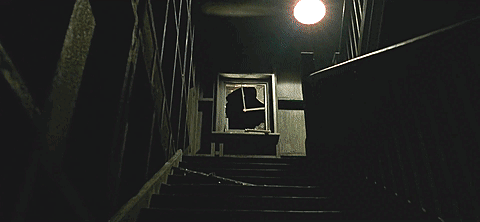
3. Renee Walker, 24

4. Dana Scully, The X-Files
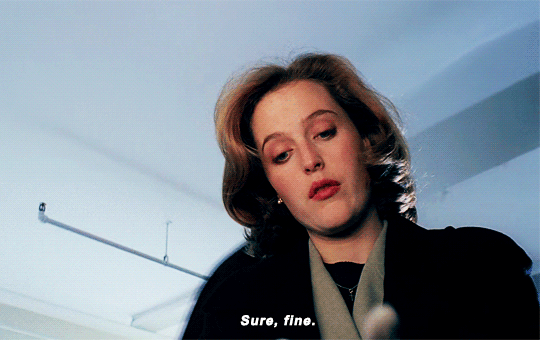
5. Bill Adama, Battlestar Galactica

6. Chidi Anagonye, The Good Place

7. KC Koloski, China Beach
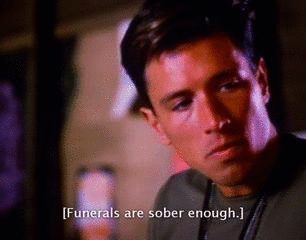
8. Susan Watts, Some Kind of Wonderful

9. Roy Kent, Ted Lasso

10. CJ Cregg, The West Wing

And I am tagging @lookforastar, @katiecotugno, @silver-dream89, @subversivegrrl, @shepardmoreau, @willowfae82, @constellationsoftears, @dealanexmachina, @effie214, and @tomwambsgns, but only if you feel like it obvs:)
#jim hopper#trinity#renee walker#dana scully#bill adama#chidi anagonye#kc koloski#susan watts#roy kent#cj cregg#love them all with all my heart#just looking at these .gifs makes me happy#although i wish there were a better one for renee
13 notes
·
View notes
Photo

I've been thinking about Transformers: War For Cybertron (the Netflix show, not the game) and how I thought it was a pretty good series, so much that maybe it should get another trilogy, or at least a 4th installment making it a quadrilogy. I mean (spoilers) the ending of Kingdom did give us such a vibe and I think such a thing should happen.
If it does I got some ideas for what could happen in it.
To replace the characters lost in the last trilogy, its revealed new Cybertronians have been born and have join certain factions. Some characters that should appear are Hot Rod, Silverbolt, and Beast War's Inferno.
Since we last saw our heroes, Cybertron has gotten a little bit better, sure there are problems but the two factions are at "peace" of sorts. Its only after Unicron's forces infiltrate both sides (like Cyclonus) and start trouble do the two factions start fighting each other again.
We find out Unicorn merged Nemesis and Galvatron into one being (maybe with two minds) giving us a new Transformers character. At one moment in the story to combat this new threat (and to sell toys) Prime and Megatron power link with each other, something I'm surprised does exist (he is called Glithor) but I see it being more detailed then just giving Optimus Megatron's fusion cannon and such.
I can see a subplot where Optimus starts to look for a successor for the bearer of the Matrix, and though he had other first choices like Bumblebee, after bonding with him through combat and seeing the Matrix show a strong response to him, he starts to train Hot Rod as a Prime, even giving him the title of a Prime.
When Unicron appears, the two factions realize the only way to stop him is to awaken Primus. This eventually leads to another first time for a show, where we see Unicron and Primus fight in there robot modes. Maybe Primus needs help here so Optimus and Megatron control him Pacific Rim style.
I see a scene where while Unicorn and Primus fight, a second team infiltrate Unicorn to destroy him with the Matrix of Leadership. Here they deal with Cyclonus and other servants of Unicron.
We see a bit of Armada Starscream in Starcream as I saw a bit of that happening in Kingdom. Maybe near the end he sacrifices himself (or maybe give up most of his body) to save the day in an act of selflessness while inside Unicron.
When things are at their darkest, Hot Rod (who is inside Unicron having trouble opening the Matrix) is able to talk to Primus and the still living Optimus through the Matrix where he gets a pep talk from them and with his newfound confidence, Hot Rod (now Rodimus Prime) is able to open the Matrix to destroy Unicron and save the day.
I also had an idea recently of several characters becoming Primes at once. Maybe in the story, several relics of ancient Primes are discovered in preparation to stopping Unicron and just like Hot Rod, turn other fan favorite characters into Primes like Bumblee and allow Primal to become Optimal Optimus.
If WFC ever does get a sequel would you want any of these ideas to happen? What would you want to see in such a show?
Transformers War for Cyberton image is owned by Hasbro and Netflix
base by JasonPictures
4 notes
·
View notes
Text
My Favourite Movies (in order)
Scott Pilgrim vs The World
Monty Python & The Holy Grail
The Thing
The Truman Show
Whiplash
The World’s End
Spirited Away
American Psycho
The Dark Knight Trilogy (2, 3/1)
Superbad
Ferris Bueller’s Day Off
The Indiana Jones Quadrilogy (1,3,2,4)
Donnie Darko
The Good, The Bad and The Ugly
Howl’s Moving Castle
What We Do In The Shadows
The Shawshank Redemption
The House That Jack Built
Turbo Kid
Ghostbusters
Napoleon Dynamite
Beetlejuice
Spiderhead
Fight Club
The Back to The Future Trilogy (1,2,3)
Bo Burnham: Inside
Project X
Perfect Blue
The Batman
Hardcore Henry
Django: Unchained
Dick Figures: The Movie
Hitchhiker’s Guide to The Galaxy
The Mitchells Vs. The Machines
Nightcrawler
Deadpool (1 & 2)
Johnny Mnemonic
Hot Fuzz
Shaun of The Dead
There Will Be Blood
Watchmen
Palm Springs
Falling Down
Groundhog Day
The Crucible
The Final Girls
Megamind
Monster House
Coraline
Edward Scissorhands
The Face of Another
Joker
Rango
The Goonies
Hot Rod
Army of Darkness
Daniel Isn’t Real
Scooby Doo (1 & 2)
Journey to the Center of the Earth
Rocky Horror Picture Show
The Suicide Squad
Bird of Prey
The Cable Guy
Catch Me If You Can
Nope
Ted 2
The Breakfast Club
Us
Lemony Snicket’s A Series of Unfortunate Events
Chronicle
Amsterdam
The Babysitter
Don’t Worry Darling
Midsommar
Inkheart
Spaceballs
Slaughterhouse Rulez
Jumanji
Zathura: A Space Adventure
Paranorman
Push
Nerve
Get Out
Zombieland
Jojo Rabbit
Charlie & The Chocolate Factory
Pulp Fiction
The Voices
No Country For Old Men
Masterminds
The Fear Street Trilogy (tied)
Cabin In The Woods
Scream
Ace Ventura (1 & 2)
#ALIVE
Lord of The Rings Trilogy (1, 3, 2)
The Hitman’s Bodyguard
Paul
A Nightmare on Elm Street
Flushed Away
Friday The 13th
Home Alone (1 & 2)
The Matrix Trilogy (1, 2/3)
Lupin III: The First
Who Framed Roger Rabbit?
Cooties
The Babysitter: Killer Queen
Ted
They Live
This Is the End
Last Night in Soho
My Neighbour Totoro
Pineapple Express
Free Guy
Tick, tick…BOOM!
Se7en
Jaws
Liar Liar
Die Hard
Monty Python & The Life of Brian
Looney Tunes: Back In Action
The Three Amigos
Reservoir Dogs
Johnny Dangerously
Guns Akimbo
Psycho
Love and Monsters
Tucker & Dale vs Evil
Eighth Grade
Speed
Drillbit Taylor
The Adventures of Sharkboy and Lavagirl
Spy Kids Trilogy (3, 2, 1)
Flight of The Navigator
The Hangover Trilogy (1, 2, 3)
A Scanner Darkly
Police Academy
Happy Death Day
Freaks of Nature
Goodfellas
30 Minutes or Less
Encino Man
Sky High
The Black Phone
Bill & Ted’s Excellent Adventure
Bill & Ted’s Bogus Journey
Scouts Guide to the Zombie Apocalypse
Good Time
Absolutely Anything
Big Fat Liar
Arachnophobia
Lucy
Space Jam
Eraserhead
Barbarian
Mr. Peabody & Sherman
The Dead Don’t Die
Inglorious Basterds
Willy’s Wonderland
Tusk
Game Over, Man!
Get Smart
6 notes
·
View notes
Photo
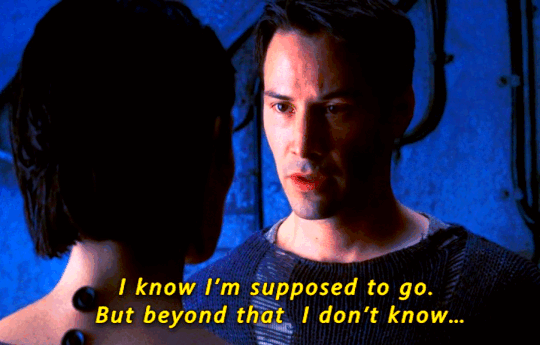
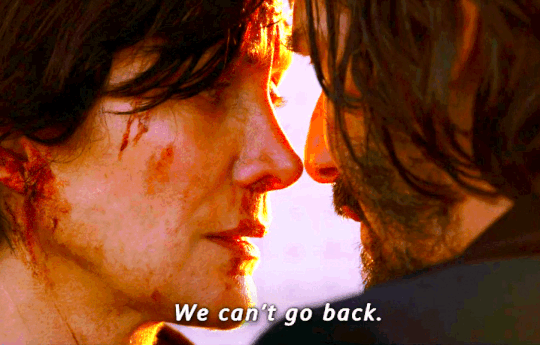
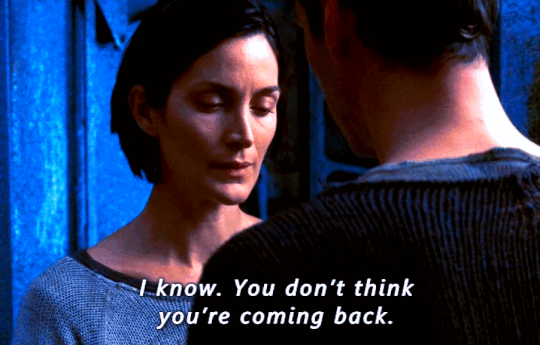

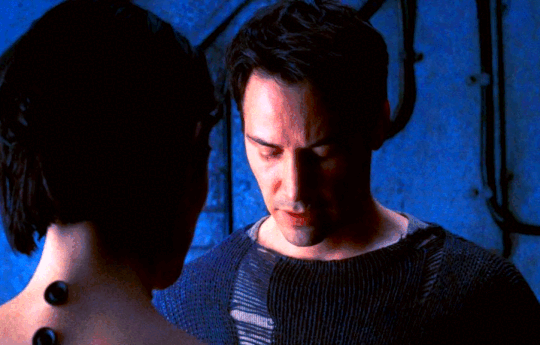
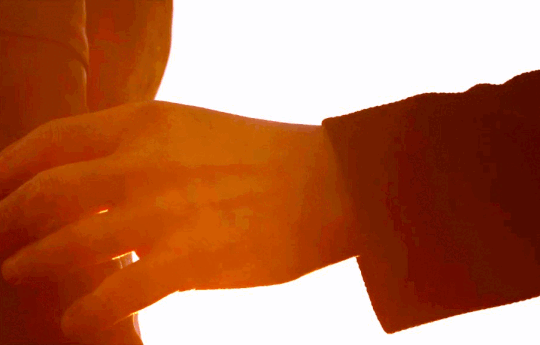

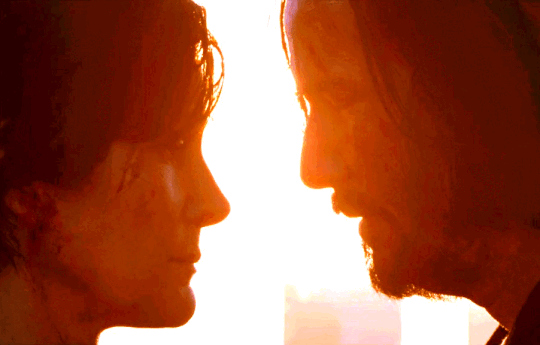


The Matrix Revolutions (2003) | The Matrix Resurrections (2021)
#the matrix resurrections#the matrix#the matrix resurrections spoilers#the matrix spoilers#matrix spoilers#matrixedit#thematrixedit#trinity#neo#neo x trinity#neotrin#neotrinity#filmedit#movieedit#keanu reeves#carrie anne moss#lana wachowski#lilly wachowski#the matrix trilogy#the matrix quadrilogy#the matrix 4#the matrix franchise#the matrix revolutions
676 notes
·
View notes
Text
Just a thought
Let’s be honest, no matter how hard 2021 was, The Matrix Ressurections made its end a little bit more beautiful...
Happy New Year Everyone <3
#the matrix#the matrix ressurections#trilogy#sequel trilogy#quadrilogy#neo#keanu reeves#carrie anne moss#love#trinity#just a thought
46 notes
·
View notes
Text
can I rant about the matrix resurrections to someone for like ten hours please
#the matrix resurrections#if anyone is interested dm me immediately#for the record I loved the movie#it took me a week to fully digest it but after I did hOH boy am I hungry for more#sadly from what I’ve seen on the internet no one else seemed to like it as much as I did#some for valid reasons and some for not valid reasons#also if you want me to rant to you please have watched the movie#and also the previous trilogy#I will literally spoil the entire quadrilogy in one sitting#you have been warned
3 notes
·
View notes
Video
youtube
"Amor Vincit Omnia".
Love conquers all. And if there is anything we've learned from the Matrix Quadrilogy is that love is the greatest power in the universe. It can change the world, it can make you fly. Neo and Trinity are living proof of that. Their love transcends rules, boundaries, time and death, and thrives, stronger than ever. Saying thanks to Lana Wachowski for bringing these two iconic characters back is just not enough. It will never be enough. But for now, let's celebrate today with the purest, most impactful love story in cinematic history.
To Neo and Trinity! May they keep flying together across our skies and paint them with sunshine and rainbows! ♥
#The Matrix#The Matrix Resurrections#Neo x Trinity#Keanu Reeves#Carrie-Anne Moss#The Matrix Reloaded#The Matrix Revolutions#Amor Vincit Omnia#said Lana Wachowski AND BELIEVED IT#I rest my case#hope you enjoy this cause I've been working on it for 2 months!#my video
40 notes
·
View notes
Text
電影星期二 32 - Hong Kong action cinema
Couple weeks ago we watched the Matrix trilogy, ahem ugh i guess quadrilogy, and back then I said, hey, these ladies were mostly riffing on Hong Kong kung fu movies (and indeed they got Yuen Woo-Ping to do the choreography) and we had better watch some of them soon. Well, the promised ‘soon’ has arrived...
So let’s go to 香港 (/ˈhɒŋkɒŋ/)! Here’s a map from Wikimedia Commons, I’ll let you find your own way:
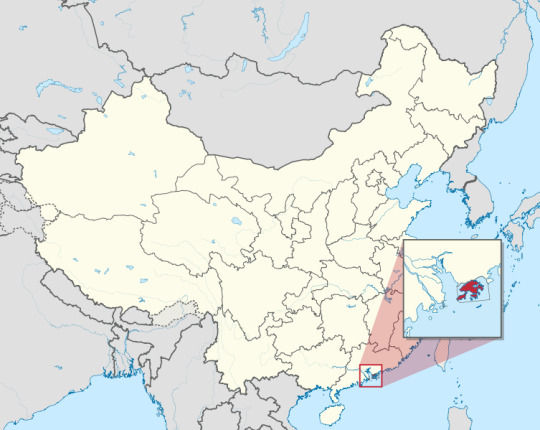
OK, so, you probably know the broad strokes: densely populated coast of China that has for a long time stood as the major interface to the global capitalist market - and the island that’s been in the news a lot recently given the anti-extradition protest movement. Do we have time to write a substantial history? Ehhhh that might be a tall order. But let’s give try and hit the main points...
Sitting on the south side of China, the story of Hong Kong is very closely connected to the story of maritime trade. So let’s start by quoting a little from Red Dust by the Chuang collective, who pass through the following summary of hundreds of years of history:
The southern coastline had long played an important role in regional trade and, after the decline of the Silk Road (with the fall of the Tang Dynasty in 907 CE), coastal trade had grown to dominate pre-capitalist commerce.[2] But there also existed strong countervailing tendencies in each dynasty that helped to mute the power exerted by the forces of commercialization. One of the most persistent threats was the transformation of these semi-illicit trade networks into independent pirate navies. By the time of the Qing (1644-1912), this threat took on the character of an anti-Manchu rebellion, led by the Ming loyalist Zheng Chenggong (known as Koxinga in the West), who had fled to the sea as the Qing armies invaded Fujian. Zheng overturned Dutch rule in Formosa (Taiwan) and turned the island into a base for his rebel navy. In response, the Qing not only banned all coastal navigation (rendering illegal a bulk of the region’s international trade), but also depopulated the coastline, deporting the population inland and razing the deserted villages in an attempt to cut off Zheng’s supply lines.[3]
Once Zheng’s rebellion was put down (in 1663 with the conquest of Taiwan), the coastline was gradually repopulated and maritime navigation resumed. This began to re-open the mainland market more directly to the nascent trade networks of the Europeans, which would soon begin to take on a distinctly capitalist character.[4] At the height of the dynasty, the mainland not only ran a healthy trade balance with the West, exporting tea, porcelain, silk and various manufactures, but also sat at the center of regional trade, with even isolationist Japan dependent on imports of raw materials from the Qing.[5] But the state had become circumspect about trade, fearing the growing power of merchants, the possibility of renewed rebellion, and the increasing capacities of the Europeans. The court therefore imposed rigorous monopolies on key goods and began to restrict foreign trade to an ever decreasing number of official customs ports. This trend reached its apex with the Canton system, from 1757 to 1842, when all foreign trade was funneled through a single port and its attached stores and warehouses (the “Thirteen Factories”) in Canton (Guangzhou).
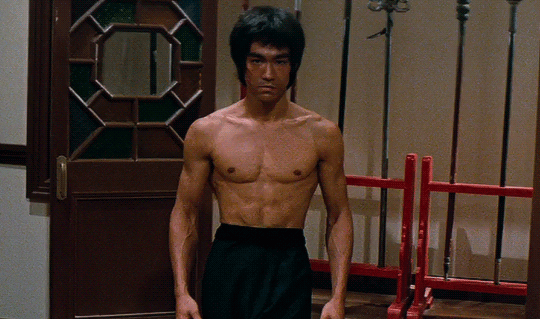
^ that’s Bruce Lee. We’ll get to him in a bit.
In 1839, the Qing attempted to crack down on opium, seizing shipments and declaring that any further attempts to sell the drug would be met with execution. Britain, riding high on imperialist capitalism and in no hurry to give up the ability to sell opium on an enormous territory, promptly invaded in an event known as the First Opium War. The war ended in a humiliating defeat for the Qing, losing major ports like Guangzhou, and in their surrender, they ceded Hong Kong as a British colony.
Over the next century, Hong Kong’s population expanded a ton thanks to civil wars like the Taiping Rebellion, which followed the old dark joke about Chinese civil wars by killing an estimated 20-30 million people and drove many people to the prosperous colony sitting right on a major trade route. Continued invasions by the European and eventually Japanese colonialists in the Second Opium War (1856-1860) and First Sino-Japanese War (1894-1895) led to Britain pressing its claims onto more and more territory, taking not just Hong Kong island itself but a significant chunk of the coast. Part of this involved an agreement to lease the islands called the ‘New Territories’ for 99 years.
(These events form part of a period mythologised as the ‘Century of Humiliation’ to both the nationalists and communists, in which the Qing and then their short-lived successor in the Republic of China suffered continual military defeats and extortionate treaties.)

Then came the second world war; the Japanese invaded once more and displaced the British for a few years, committing rapes and atrocities which drove out about half of the population. In 1945, with their defeat, Hong Kong reverted to being a British colony. This led to a fairly different trajectory to the mainland, ruled by capitalist Britain rather than the mainland’s socialist ‘developmental regime’; it also led to divergences in language, with Hong Kong continuing to use the Traditional Chinese alphabet instead of the Simplified Chinese first introduced under Mao. (The majority language Hong Kong is Cantonese rather than Mandarin, but this is shared with several areas of the mainland.)
Hong Kong’s position as a British colony proved highly valuable for the capitalist powers in the Cold War, who invested heavily in the city in order to better contain China. This led, in Chuang’s account, to the widely described ‘flying geese’ development pattern, in which less capital-intensive industries rippled down a chain from Japan to South Korea, Hong Kong and Taiwan as each one saw a rise in wages which made labour-intensive industry less profitable. This was, they write, not at all a natural phenomenon:
Future developmental drives were therefore defined by their proximity to US political power, now facilitated by Japanese financing. In the same way that Japanese industry had been catapulted into the forefront of global production by the Korean War procurement program, industrial development in Taiwan and Hong Kong would be shaped by the military containment of the Chinese mainland.
As such, Hong Kong got built up - a lot. A particularly curious case comes in the Kowloon Walled City, a tiny Chinese enclave in between two British-controlled territories which got built up into, essentially, one enormous building. Infamous (to states!) for having almost no state control, it became home to sex work, gambling and drug use until it was transferred to the British and demolished for a park in 1987.
For propaganda purposes, Britain found it important to paint its colony as a bastion of liberal freedoms in contrast to the tyrannical Chinese Communist Party. The extent to which this is actually true is another question, and probably depends very much exactly which period of history you examine and your place in society. Until the Japanese invasion, the trade in opium was still the major source of income. Naturally, the British and American expats sat at the top of the colonial power structure; even Wikipedia writes
Although the largest businesses in the early colony were operated by British, American, and other expatriates, Chinese workers provided the bulk of the manpower to build a new port city.[38]
However, by the 80s, gradually ethnic Chinese people joined the ranks of the billionaires slurping up profit from the massive flow of trade through the port, such as Li Ka-Shing, the thirtiest richest person in the world. Meanwhile, foreign domestic workers enjoyed almost no protections. The 60s and 70s saw major leftist protests and strikes, connected with the Cultural Revolution on the mainland, which led to the colonial government implementing a series of economic reforms.
Of course, by the end of the Cold War, the balance of power between Britain and China had shifted considerably; for a variety of complicated reasons, China was becoming the capitalist world system’s major manufacturing base. As far as Hong Kong is concerned in particular, we can note the neighbouring area of Shenzhen was on its way to becoming the place where the vast majority of electronics are manufactured.
So in the late 70s, the question arose of the lease coming due for the New Territories. In 1984, Thatcher’s government agreed that the whole of Hong Kong would revert to the PRC’s control by 1997, with a promise that the economic and legal systems would stay more or less the same for at least fifty years. Inevitably the schedule seems to have moved up a lot, with the 2019 extradition bill leading to a massive-scale protest movement which enchanted anarchists abroad with their creative crowd tactics against the British-trained police... a movement which has now mostly been crushed.

Anyway, believe me, that’s the short version - as written by a British girl armed with a couple of hours, a communisation theory journal, and Wikipedia. I strongly encourage you to do your own research. What it was actually like to live through this long period is yet another question, and one I scarcely have the tools to address.
But we’re actually here to talk about movies!
The story of Hong Kong action cinema actually begins, apparently, in Shanghai, with a boom of wuxia (武俠 [ù.ɕjǎ]) novels in the 1920s-1930s about supernaturally powered figures in China’s mythological past - an enduring genre! However, these films, seen as promoting superstition, were suppressed by the Kuomintang government; the outbreak of the Civil War and the Japanese invasion further made the mainland an inhospitable place for movie-making. Unless of course you’re the absolute madlads who animated Princess Iron Fan (Animation Night 29) under Japanese bombs.
So instead, the Chinese film industry jumped a good 1226km to Hong Kong. At this point a split developed: Cantonese-language B-movies continued making wuxia, while the more prestige Mandarin-language dramas abandoned the genre. The first such Cantonese movie is The Adorned Pavilion (1938). Before long, however, wuxia found a more down-to-earth counterpart in kung fu movies. Here’s Wikipedia:
These movies emphasized more "authentic", down-to-earth and unarmed combat over the swordplay and mysticism of wuxia. The most famous exemplar was real-life martial artist Kwan Tak Hing; he became an avuncular hero figure to at least a couple of generations of Hong Kongers by playing historical folk hero Wong Fei Hung in a series of roughly one hundred movies, from The True Story of Wong Fei Hung (1949) through to Wong Fei Hung Bravely Crushing the Fire Formation (1970).[3] A number of enduring elements were introduced or solidified by these films: the still-popular character of "Master Wong"; the influence of Chinese opera with its stylized martial arts and acrobatics; and the concept of martial arts heroes as exponents of Confucian ethics.[4]

From this point both genres became incredibly prolific. The Shaw Brothers arrived in the 1960s, bringing with them a new, more acrobatic approach to wuxia films inspired by Japanese chanbara bloody samurai films and newly popular wuxia novels - and their company would go on to release over a thousand films. At this point, although the emphasis started to shift to narratives about masculinity which would come to be exemplified by the films of Chang Cheh (張易揚), women were still pretty prominent with stars like Cheng Pei-pei (鄭佩佩) and Connie Chan Po-chu (陳寶珠).
Sadly, this balance would gradually shift as, coming into the 70s, kung fu movies displaced wuxia and Hong Kong cinema started to get more of an international profile. Still, this was a period of enormous technical innovation, with ever more complex stunt work.
Time to enter Bruce Lee (李小龍)! The son of a Chinese Opera performer born during a trip abroad in San Francisco, Lee spent his childhood in Hong Kong performing in movies as a child and studying martial arts; he returned to America for his education. He became wildly famous in the 1970s with a series of movies outside of the Shaw Brothers’ monopoly, which helped to break their draconian contracts, beginning with Lo Wei's The Big Boss (1971) and Fist of Fury (1972) and then Golden Harvest's Way of the Dragon (1972) which Lee wrote and directed himself.
Golden Harvest were at the time a small upstart player, but they were propelled to prominence in 1973 with an international collaboration with Warner Bros on Enter The Dragon, and soon became the second major power in Hong Kong filmmaking, eventually displacing the Shaw Brothers. Tragically, Lee died shortly after Enter the Dragon while working on another film with director Robert Clouse, The Game of Death, which was finally released in 1978.
There followed a wave of ‘Lee clones’, with filmmakers hoping to cash in on his popularity by dressing up their stars to resemble Lee. Among them was a young Jackie Chan (房仕龍), who met little success until he collaborated with choreographer Yuen Woo-Ping on a more comedic film Snake in the Eagle's Shadow (1978), and the combination of skilfully performed kung fu and physical comedy quickly became his signature with films like Drunken Master (1978); he soon started directing his own movies, first The Fearless Hyena (1979) and gradually rose to similar fame as Lee. Alongside him rose two other comedy oriented martial arts stars:
Especially notable in this regard were two of Chan's childhood Peking Opera School classmates, Sammo Hung and Yuen Biao, who also made careers of this specialty, sometimes co-starring with Chan. Hung, noted for the seeming paradox of his overweight physique and physical agility, also made a name for himself as a director and action choreographer from early on, with titles like Enter the Fat Dragon (1978).

In the 80s, we have a number of new developments - you might read about them here, but alas I’m running out of time so let’s focus on the one strand that’s going to be relevant tonight! In 1979, the Shaw Brothers made a departure from their usual themes by remaking an Indian crime drama Deewaar (1975) as The Brothers (1979). This laid the foundation for a new genre: the ‘gun-fu’ or ‘heroic bloodshed’ crime films of John Woo, which took much of the visual language of the preceding kung fu films but changed the aesthetic to focus on long coats and pistols, focusing on typically on members of the triads.
The genre began with A Better Tomorrow (英雄本色) (1986), a breakout hit which promptly turned around the fortunes of martial arts star Chow Yun-fat (周潤發). In it, two friends Ho and Mark in the triad are separated when one turns himself in to buy time for a low-ranking member Shing’s escape, not realising that Shing is the one who betrayed him. Ho’s father is killed as a result, and his brother Kit, a cop, loses his chance for promotions due to his association with Ho, while Ho is injured in an attack on the traitors in the Triad and loses his standing. Three years later, on Ho’s release, he attempts to escape the life of the triad, but is pulled back in by Kit’s obsessive, ineffective pursuit of Shing; Kit meanwhile refuses to accept his brother’s attempt to change. It all comes to a head in a bloody shootout on the docks, in which Mark and Shing are killed, but Kit finally forgives Ho - who turns himself in once more.
A Better Tomorrow set the tone for a series of other movies in the 80s by Woo and others, united by similar themes of dramatic rises and falls, honourable characters in a messed up world, loyalty and brotherhood and etc. For whatever reason, similar films centring on women seem to get a different genre title as ‘girls with guns’ films - but these started at pretty much the same time with Yes, Madam (1985), and this became somewhat influential on anime.
In the 90s, these more or less romantic triad films started to die out, and wuxia made a comeback - now supported by the technical ability to perform wire stunts. By this point, Hong Kong performers were now widely known and started to leave to perform in other film industries. But we’ll come to that period on some future movie night.
What’s the plan tonight? With literally hundreds of films, it’s hard to know where to begin, but luckily @mogsk‘s expertise extends to Hong Kong action films as well, so following her advice we’ll be screening two of the most influential: Enter the Dragon (1973) and A Better Tomorrow (1986). It’s been quite a while since I saw any Hong Kong martial arts films (my old tai chi teacher was a fan and lent me some obscure ones!) so I’m really looking forward to getting an education in this the same way I did kaiju films!
So: tonight’s film night will begin very shortly! The place is, as ever, twitch.tv/canmom - hope to see you there!
17 notes
·
View notes
Text
It's fair to warn you all
This tumblr will be posting a lot of Matrix things for some time because I love the quadrilogy and all my feels about it was actived by the new movie!
BTW TRINITY AND NEO ARE SOULMATES
I LOVE MATRIX RESURRECTIONS
AND HATERS CAN GO TO HELL
19 notes
·
View notes
Link
by thedurvin
Report to congress detailing troubling trends: for at least four decades now, the Department of Defense has continuously and suspiciously allowed SkyNet's Master Control Program unfettered access to resources and research, either out of ignorance, apathy, or active malevolence.
Words: 1051, Chapters: 1/1, Language: English
Fandoms: WarGames (1983), Tron (Movies), RoboCop (Movies 1987-1993), Terminator (Movies), Office Space (1999), Short Circuit (1986), WALL-E (2008), Westworld (1973), Blade Runner (Movies), Alien Quadrilogy (Movies), Universal Soldier (Movies), Predator Original Series (1987-1990), The Matrix (Movies), Hitchhiker's Guide to the Galaxy, Back to the Future (Movies), Bill & Ted (Movies), Jurassic Park Original Trilogy (Movies), The Fly (1986), The Adventures of Buckaroo Banzai Across The 8th Dimension (1984), Ghostbusters (1984-1989; 2020), Pacific Rim (Movies), They Live (1988)
Rating: General Audiences
Warnings: Creator Chose Not To Use Archive Warnings
Categories: Gen
Characters: Ian Malcolm, Buckaroo Banzai, Egon Spengler, Skynet (Terminator), Master Control Program (Tron), Newton Geiszler, Hermann Gottlieb
Additional Tags: Conspiracy, unified crossover theory, can you tell i used to be a big league of extraordinary gentlemen fan
read it on the AO3 at https://ift.tt/2XwRMUG
2 notes
·
View notes
Text
DoD Mishandling of Military AI, 1982-Present, by an Anonymous Whistleblower
read it on the AO3 at https://ift.tt/2XwRMUG
by thedurvin
Report to congress detailing troubling trends: for at least four decades now, the Department of Defense has continuously and suspiciously allowed SkyNet's Master Control Program unfettered access to resources and research, either out of ignorance, apathy, or active malevolence.
Words: 1051, Chapters: 1/1, Language: English
Fandoms: WarGames (1983), Tron (Movies), RoboCop (Movies 1987-1993), Terminator (Movies), Office Space (1999), Short Circuit (1986), WALL-E (2008), Westworld (1973), Blade Runner (Movies), Alien Quadrilogy (Movies), Universal Soldier (Movies), Predator Original Series (1987-1990), The Matrix (Movies), Hitchhiker's Guide to the Galaxy, Back to the Future (Movies), Bill & Ted (Movies), Jurassic Park Original Trilogy (Movies), The Fly (1986), The Adventures of Buckaroo Banzai Across The 8th Dimension (1984), Ghostbusters (1984-1989; 2020), Pacific Rim (Movies), They Live (1988)
Rating: General Audiences
Warnings: Creator Chose Not To Use Archive Warnings
Categories: Gen
Characters: Ian Malcolm, Buckaroo Banzai, Egon Spengler, Skynet (Terminator), Master Control Program (Tron), Newton Geiszler, Hermann Gottlieb
Additional Tags: Conspiracy, unified crossover theory, can you tell i used to be a big league of extraordinary gentlemen fan
read it on the AO3 at https://ift.tt/2XwRMUG
1 note
·
View note
Photo

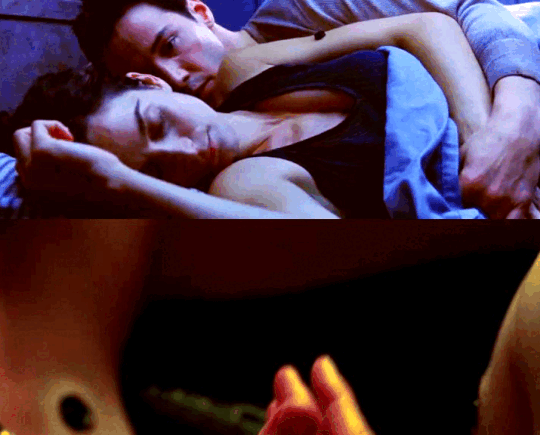




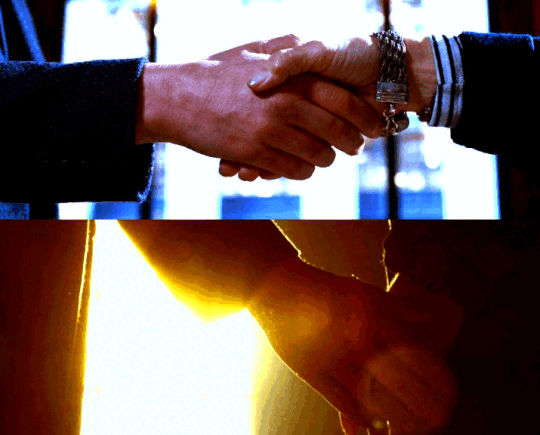

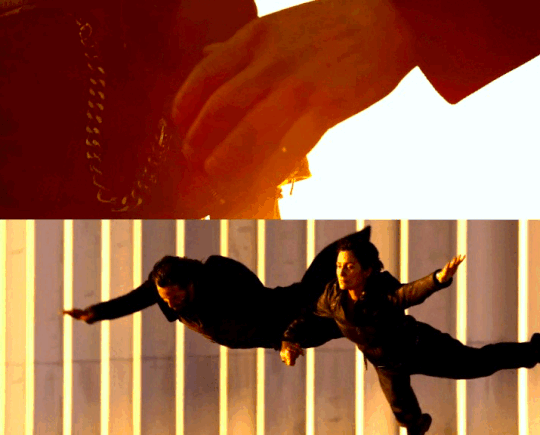

I can’t lose you. You’re not gonna lose me. You feel this? I’m never letting go.
#the matrix resurrections#the matrix#the matrix resurrections spoilers#the matrix spoilers#matrix spoilers#matrixedit#thematrixedit#trinity#neo#neo x trinity#neotrin#neotrinity#filmedit#movieedit#keanu reeves#carrie anne moss#lana wachowski#lilly wachowski#the matrix trilogy#the matrix quadrilogy#the matrix 4#the matrix franchise#the matrix reloaded#the matrix revolutions
826 notes
·
View notes
Text
Choice
When I heard that The Matrix Ressurections was coming, I already knew it wasn’t about the choice, I only had to understand it. And during the premiere I did. I realised what I had to do. I had to love it. And I do...
#the matrix#trilogy#keanu reeves#carrie anne moss#neo x trinity#neo#trinity#love#the matrix ressurections#quadrilogy#just a thought
13 notes
·
View notes